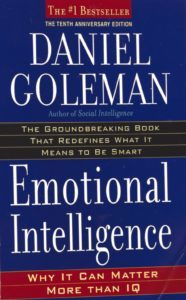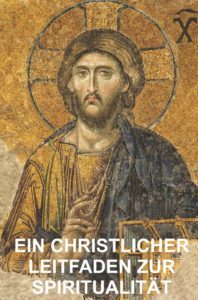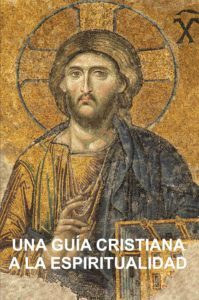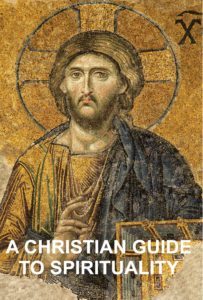Stephen W. Hiemstra's Blog, page 136
December 25, 2020
Was glaubst du über Gott?
Von Stephen W. Hiemstra
Sondern das soll der Bund sein, den ich mit dem Hause Israel schließen will nach dieser Zeit, spricht der HERR: Ich will mein Gesetz in ihr Herz geben und in ihren Sinn schreiben, und sie sollen mein Volk sein, und ich will ihr Gott sein. (Jer 31:33)
Einmal als Jugendleiter bat ich jedes Mitglied der Gruppe, eine persönliche Glaubenserklärung zu verfassen. Diese Aufgabe hat uns den ganzen Abend beschäftigt. Am Ende hatten diese meisten Jungenden eine Erklärung, die dem Apostolische Glaubensbekenntnis ähnelten. Für den christlichen Glauben ist dieses Glaubensbekenntnis grundlegend.
Das Apostolische Glaubensbekenntnis begann im vierten Jahrhundert als Tauferklärung des Glaubens (Rogers 1991, 61–62). Es hat sich zu einer Schlüsselaussage des Glaubens entwickelt, die oft in Gottesdiensten auf der ganzen Welt auswendig gelernt und verkündet wird.
Das Glaubensbekenntnis des Apostels gliedert sich in drei Teile: Vater, Sohn und Heiliger Geist. Jeder Teil hilft uns, jede Person der Dreifaltigkeit besser zu verstehen und zu identifizieren. Das Bekenntnis über den Vater konzentriert sich auf seine Werke als Schöpfer. Das Bekenntnis zum Sohn erzählt die Geschichte von Jesus Christus—Empfängnis, Geburt, Tod, Auferstehung, Aufstieg und Rückkehr. Das Bekenntnis zum Heiligen Geist verbindet den Geist mit den Werken und den Schlüssellehren der Kirche.
Das Glaubensbekenntnis des Apostels erzählt hauptsächlich die Geschichte von Jesus. Andere Teile des Bekenntnises scheint einfachlich, die Geschichte von Jesus zu klammern. Dies ist kein Unfall. Die vier Evangeliumserzählungen konzentrieren sich jeweils auf die Geschichte von Jesus. Frühe Predigten in der Kirche, die in der Apostelgeschichte aufgezeichnet sind, konzentrieren sich oft auch darauf, die Lebensgeschichte Jesu zu erzählen (Acts 2:1-41; 10:34-43; und 13:16-41). Im Allgemeinen konzentriert sich das Neue Testament darauf, die Lebensgeschichte Jesu zu erzählen und seine Geschichte auf unser Leben anzuwenden.
Wann hast du das letzte Mal die Lebensgeschichte Jesu geteilt? Wie ist das Leben Jesu zu einem Vorbild für deines Leben geworden?
Verweise
Rogers, Jack. 1991. Presbyterian Creeds: A Guide to the Book of Confessions. Louisville, KY: Westminster John Knox Press.
Was glaubst du über Gott?
Siehe auch:
Einleitung auf Ein Christlicher Leitfaden zur Spiritualität
Andere Möglichkeiten, sich online zu engagieren:
Autoren Seite: http://www.StephenWHiemstra.net
Herausgeber Seite: http://www.T2Pneuma.com
Mitteilungsblatt: https://bit.ly/Dec_2020
The post Was glaubst du über Gott? appeared first on T2Pneuma.net.
December 22, 2020
VanDuivendyk: Understanding Grief
 Tim P. VanDuivendyk [1]. 2006. The Unwanted Gift of Grief: A Ministry Approach. New York: Haworth Press Inc.
Tim P. VanDuivendyk [1]. 2006. The Unwanted Gift of Grief: A Ministry Approach. New York: Haworth Press Inc.
Review by Stephen W. Hiemstra
Do you give grieving people permission to grieve? Or do you try to sweep grief under the rug?
Introduction
In his book, The Unwanted Gift of Grief, chaplain Tim P. VanDuivendyk advises us to walk with people in their grief and help them complete the process of grief work (12). He observes:
So many well-meaning friends and loved ones may try to cheer us up rather than just be with us in our sadness. Rather than help us grieve through and talk out our pain, they may attempt to talk us out of pain. Rather than be sojourners with us in the wilderness, they may attempt to find us a shortcut…This book is not designed to take you out of your pain but to invite you into and through your pain to transformation and new life (3).
In this context, a sojourner is: one who is willing to support, listen, and compassionately walk with another through their wilderness of grief (5). VanDuivendyk further observes:
[This] wilderness is not just a physical place but also a spiritual and emotional place. In the wilderness of grief we may not know which direction to take. Feelings of fear may paralyze us. We may not be able to see through the thick forest to tomorrow (9).
Healing with Scabs
VanDuivendyk characterizes grief almost like a scab on a wound. He writes:
Grief fills up the vacuum of empty space left by our deceased loved one until we can adjust to and accept the reality that the person is no longer with us (12).
Grief is a gift because it helps us transform towards differentiating ourselves from our loved one (16). Because they have passed, we must learn to live in their absence (the process of differentiation). A scab protects us while the skin underneath grows to close up the wound.
VanDuivendyk sees 3 passageways through grief, depending on whether we prefer thinking, feeling, or acting (24-26). Think people follow a cognitive pathway; feel people track emotions but may not be able to reason through what is going on; act people stay busy doing tasks during grief. Each pathway offers strengths and weaknesses. An act person, for example, may develop into a workaholic in response to grief (29) while a think person may worry obsessively and a feel person may slip into depression (28-29). VanDuivendyk suggests that we should learn to employ and work with each approach as a way to balance out (27).
Organization
VanDuivendyk’s The Unwanted Gift of Grief is written in 17 chapters preceded by a forward, acknowledgments, and an introduction and followed by notes, suggested readings, and an index. These chapters are:
Grief as Gratitude, Grief as a Gift;
Everyone Grieves Differently;
Factors that affect the Wilderness of Grief;
Unbelievable Darkness;
Frustration and Anger Amid “Why?”
Praying for a Miracle;
Wrestling with Sadness and Depression;
Healing: Experiencing the Light Again;
And Yet…We Never Forget!
Being a Sojourner;
Sojourning with Those in Unbelievable Darkness;
Sojourning with Those Frustrated and Angry Amid “Why?”
Sojourning with Those Praying for a Miracle;
Sojourning with Those Wrestling with Sadness and Depression;
Sojourning with Those in Healing and Light;
Marriage : Tough Enough without Grief;
Ways of Making it Through the Wilderness of Grief (vii-ix).
Clearly, VanDuivendyk writes using a topical approach.
In my own work as a chaplain intern, I found that the majority of patients that I visited with suffered from grief at some level. For some it was active and obvious; for others it was repressed and a source of physical complication. Helping people become more aware of their grief was one of the ways to facilitate their journey with it.
Assessment
More than anything, VanDuivendyk convinced me of the need to give people permission to grieve, particularly at funerals. That one insight was worth the ticket of admission. After all, ours is a religion that began in a graveyard, not a church. We grieve and can give permission to grieve because with the resurrection of Jesus Christ we know the graveyard is not the end of the story. The end of the story is not sadness, but joy—in Christ.
Footnotes
[1] http://Tim.VanDuivendyk.com; www.MemorialHermann.org/services-spec...
Also see:
Books, Films, and Ministry
Other ways to engage online:
Author site: http://www.StephenWHiemstra.net,
Publisher site: http://www.T2Pneuma.com.
Newsletter: https://bit.ly/Dec_2020
The post VanDuivendyk: Understanding Grief appeared first on T2Pneuma.net.
December 21, 2020
Epistemology: Monday Monologues (podcast) December 21, 2020
 Stephen W. Hiemstra 2020 (Ken Burtram Photography)
Stephen W. Hiemstra 2020 (Ken Burtram Photography)By Stephen W. Hiemstra
This morning I will share a prayer and reflect on Epistemology–how do we know? After listening, please click here to take a brief listener survey (10 questions).
To listen, click on this link.
Hear the words; Walk the steps; Experience the joy!
Epistemology: Monday Monologues (podcast) December 21, 2020
Also see:
Monday Monologue On March 26, 2018
Other ways to engage online:
Author site: http://www.StephenWHiemstra.net,
Publisher site: http://www.T2Pneuma.com.
Newsletter: https://bit.ly/Dec_2020
The post Epistemology: Monday Monologues (podcast) December 21, 2020 appeared first on T2Pneuma.net.
December 20, 2020
Prayer Day 5
 By Stephen W. Hiemstra
By Stephen W. HiemstraHeavenly Father,
Breathe on us your breath of life.
Soften our hearts to receive your word and bolster our minds to understand it.
Restore to us the joy of your salvation.
In Jesus’ precious name. Amen.
Prayer Day 5
Also see:
Believer’s Prayer
Other ways to engage online:
Author site: http://www.StephenWHiemstra.net
Purchase Book: http://www.T2Pneuma.com
Newsletter: https://bit.ly/Dec_2020
The post Prayer Day 5 appeared first on T2Pneuma.net.
Oración Dia 5
Por Stephen W. Hiemstra
Padre Celestial,
Respiras en nosotros tu aliento de la vida.
Suavizas nuestras corazones a recibir tu palabra y reforzar nuestras mentes para entender lo.
Restauras para nosotros el gozo de tu salvación.
En el preciosos nombre de Jesús, Amén.
Oración Dia 5
Ver también:
Gospel as Divine Template
Otras formas de participar en línea:
Sitio del autor: http://www.StephenWHiemstra.net,
Comprar Libro: http://www.T2Pneuma.com.
Boletín informativo: https://bit.ly/Dec_2020
The post Oración Dia 5 appeared first on T2Pneuma.net.
Gebetstag 5
Von Stephen W. Hiemstra
Himmlischer Vater,
Atme uns deinen Lebensatem ein.
Erweichest du unsere Herzen, um deine Worte zu empfangen, und stärkest du unseren Verstand, um die zu verstehen.
Stellst du uns die Freude deiner Erlösung wieder her.
In Jesu kostbarem Namen. Amen.
Gebetstag 5
Siehe auch:
Glaubens Gebet
Andere Möglichkeiten, sich online zu engagieren:
Autoren Seite: http://www.StephenWHiemstra.net
Herausgeber Seite: http://www.T2Pneuma.com
Mitteilungsblatt: https://bit.ly/Dec_2020
The post Gebetstag 5 appeared first on T2Pneuma.net.
December 18, 2020
How Do We Know?
“All Scripture is breathed out by God and profitable for teaching, for reproof, for correction, and for training in righteousness, that the people of God may be complete, equipped for every good work.” (2 Timothy 3:16–17)
By Stephen W. Hiemstra
In the Koran, Christians are described as people of the book. Part of the reason for this distinction may be that the New Testament was the first text bound as a book. Books were cheaper to produce and more portable than scrolls, which continued to be used, for example, to record the Hebrew Bible. It is noteworthy that more New Testament texts have survived from ancient times than any other ancient manuscripts [1].
Athanasius suggested the twenty-seven books which now make up the New Testament in his Easter letter of AD 367 was later confirmed by the Council of Carthage in AD 397. The common denominator in these books is that their authors were known to have been an apostle or associated closely with an apostle of Jesus. Pope Damasus I commissioned Jerome to prepare an authoritative translation of the Bible into Latin in AD 382 commonly known as the Vulgate (Evans 2005, 162). The Vulgate remained the authoritative Biblical text for the church until the time of the Reformation when the reformers began translating the Bible into common languages.
During the reformation Martin Luther, for example, translated the New Testament into German in 1522 and followed with an Old Testament translation in 1532 [2]. Luther kept the twenty-seven books of the New Testament, but followed the Masoretic (Hebrew Old Testament) rather than the Septuagint (Greek Old Testament) in selecting books for the Old Testament [3]. The books left out became known as the Apocrypha. These books continue to distinguish the Catholic (Apocrypha included) from Protestant Bible translations (Apocrypha excluded) to this day. The list given below, which excludes the Apocrypha, is taken from the Westminster Confession:
Old Testament
Genesis, Exodus, Leviticus, Numbers, Deuteronomy, Joshua, Judges, Ruth, 1 Samuel, 2 Samuel, 1 Kings, 2 Kings, 1 Chronicles, 2 Chronicles, Ezra, Nehemiah, Esther, Job, Psalms, Proverbs, Ecclesiastes, Song of Solomon, Isaiah, Jeremiah, Lamentations, Ezekiel, Daniel, Hosea, Joel, Amos, Obadiah, Jonah, Micah, Nahum, Habakkuk, Zephaniah, Haggai, Zechariah, Malachi
New Testament
Matthew, Mark, Luke, John, Acts, Romans, 1 Corinthians, 2 Corinthians, Galatians, Ephesians, Colossians, Philippians, 1 Thessalonians, 2 Thessalonians, 1 Timothy, 2 Timothy, Titus, Philemon, Hebrews, James, 1 Peter, 2 Peter, 1 John, 2 John, 3 John, Jude, Revelation
In our study of the Bible, Jesus’ attitude about scripture guides our thinking. Jesus said:
“Do not think that I have come to abolish the Law or the Prophets; I have not come to abolish them but to fulfill them. For truly, I say to you, until heaven and earth pass away, not an iota, not a dot, will pass from the Law until all is accomplished” (Matthew 5:17–18).
The Law of Moses refers to the Law (first five books of the Bible) and the Prophets (the other books). The last book in the Old Testament to be written was likely Malachi which was written about four hundred years before the birth of Christ. The last book in the New Testament to be written was likely the book of Revelation which was written around 90 AD.
The Bible represents the work of many authors, yet its contents are uniquely consistent. This consistency adds weight to our belief that the Bible was inspired by the Holy Spirit.
[1] The technical description is the Bible was the first publication to appear in widespread circulation as a codex (bound book) (Metzger and Ehrman 2005, 15). Stone (2010, 14) cites the existence of 5,500 partial or complete biblical manuscripts making it the only document from the ancient world with more than a few dozen copies.
[2] Luther completed the entire Bible in 1534 (Bainton 1995, 255).
[3] Luther translated the Apocrpha in 1534 but specifically said they were not canonical, just good to read (see: http://www.lstc.edu/gruber/luthers_bi...).
References
Bainton, Roland H. 1995. Here I Stand: A Life of Martin Luther. New York: Penguin.
Evans, Craig A. 2005. Ancient Texts for New Testament Studies: A Guide to Background Literature. Peabody, MA: Hendrickson.
Metzger, Bruce M. and Bart D. Ehrman. 2005. The Text of the New Testament: Its Transmission, Corruption, and Restoration. New York: Oxford University Press.
Stone, Larry. 2010. The Story of the Bible: The Fascinating History of Its Writing, Translation, and Effect on Civilization. Nashville, TN: Thomas Nelson.
How Do We Know?
Also see:
Preface to A Christian Guide to Spirituality
Other ways to engage online:
Author site: http://www.StephenWHiemstra.net
Purchase Book: http://www.T2Pneuma.com
Newsletter: https://bit.ly/Dec_2020
The post How Do We Know? appeared first on T2Pneuma.net.
¿Como Sabemos?
“Toda Escritura es inspirada por Dios y útil para enseñar, para reprender, para corregir, para instruir en justicia, a fin de que el hombre de Dios sea perfecto (apto), equipado para toda buena obra.” (2 Timoteo 3:16-17 NBH)
Por Stephen W. Hiemstra
En el Corán, Cristianos son describido como la gente del libro. Parte de la razon esta por distincion puede ser por que el Nuevo Testamento estaba el texto primero hecho como un libro. Los libros eran más barato a producir y más portátil que pergaminos que continuaba a ser usado, por ejemplo, a grabar el Biblia Hebrea. Es de destacar que más textos del Testamento Nuevo has sobrevivido del tiempos antiguos que cualquiera otra manuscript antiguo [1] .
Atanasio sugeridó los vientisiete libros que hoy conforman el Nuevo Testamente en su Carta de Pascua en el año 367 cual estaba confirmado por el Consejo de Carthage en el año 397. El denominator comun en estos libros esta que sus autores eran conocido por haber sido un apostal o asociada estrechamente con un apostal de Jesus. Papa Dámaso I encargó Jerome a traducir la Biblia con autoridad al Latin en el año 382 conocido comúnmente como la Vulgata (Evans 2005, 162). La Vulgata quedó la Biblia autoritaria por la iglesia desde a época de la Reforma cuando los reformadores empezaban a traducir la Biblia en las lenguas de la gente.
Durante la Reforma Martin Lutero, por ejemplo, tradujo el Testamento Nuevo en Alemán en 1522 y siguió con una traduccion de el Testamento Antiguo en 1532 [2] . Lutero mantuvo el veintisiete libros del Testmento Nuevo, pero siguió el Masorético (la Biblia Hebrea) en lugar de la Septuaguinta (el Testamento Griego) en la selección de libros para el Testamento Antiguo [3]. Los libros no han incluido eran conocido como el Apocrifos. Estos libros continuaban a distinguir la Biblia Catolica (Apocrifos incluido) de las Biblias Protestantes (Apocrificos excluido) a este dia. El listo abajo, que excluido el Apocrificio, era tomado de la Confesion Westminster:
Testamento Antiguo
Génesis, Éxodo, Levítico, Números, Deuteronomio, Josué, Jueces, Rut, 1 Samuel, 2 Samuel, 1 Reyes, 2 Reyes, 1 Crónicas, 2 Crónicas, Esdras, Nehemías, Ester, Job, Salmos, Proverbios, Eclesiastés, Cantar de los Salomón, Isaías, Jeremías, Lamentaciones, Ezequiel, Daniel, Oseas, Joel, Amós, Abdías, Jonás, Miqueas, Nahum, Habacuc, Sofonías, Ageo, Zacarías, Malaquías
Testamento Nuevo
Mateo, Marcos, Lucas, Juan, Hechos, Romanos, 1 Corintios, 2 Corintios, Gálatas, Efesios, Colosenses, Filipenses, 1 Tesalonicenses, 2 Tesalonicenses, 1 Timoteo, 2 Timoteo, Tito, Filemón, Hebreos, Santiago, 1 Pedro, 2 Pedro, 1 Juan, 2 Juan, 3 Juan, Judas, Apocalipsis
En nuestro estudio de la Biblia, la actitud de Jesus sobre escritura guia nuestras pensamientos. Jesus dijo:
“No piensen que he venido para poner fin a la Ley o a los Profetas; no he venido para poner fin, sino para cumplir. Porque en verdad les digo que hasta que pasen el cielo y la tierra, no se perderá ni la letra más pequeña ni una tilde de la Ley hasta que toda se cumpla.” (Mateo 5:17-18 NBH)
La Ley de Moises se refere a la ley (los primeros cincos libros de la Biblia) y los Profetas (los libros otros). El último libro del Testamento Antiguo que escribir era probablemente Malaquías cual fue escrito mas o menos cuatrocientos anos antes el nacio de Cristo. La último libro del Testamento Nuevo que escribir era probablemente el libro de Apocalipsis cual fue escrito cerca el año 90.
La Biblia representa el trabajo de muchos autores, sin embargo, su contenido es única consistente. Esta coherencia añade peso que la Biblia fue inspirado por el Espiritu Santo.
[1] La descripción técnica es que la Biblia fue la primera publicación a aparecer en circulacion generalizada como codice (libro encuadernado) (Metzger and Ehrman 2005, 15). Stone (2010, 14) cita la existencia de 5,500 manuscritos en parciales o totales que lo hace el unico documento del mundo antiguo con mas de un par de docenas copias.
[2] Lutero completó la Biblia todo en 1534 (Bainton 1995, 255).
[3] Lutero tradujó el Apocrifos en 1534 pero dijo especificamente que ellos no fueron canonico, solo Bueno para leer (veo: http://www.lstc.edu/gruber/luthers_bi...).
Referencias
Bainton, Roland H. 1995. Here I Stand: A Life of Martin Luther. New York: Penguin.
Evans, Craig A. 2005. Ancient Texts for New Testament Studies: A Guide to Background Literature. Peabody, MA: Hendrickson.
Metzger, Bruce M. and Bart D. Ehrman. 2005. The Text of the New Testament: Its Transmission, Corruption, and Restoration. New York: Oxford University Press.
Stone, Larry. 2010. The Story of the Bible: The Fascinating History of Its Writing, Translation, and Effect on Civilization. Nashville, TN: Thomas Nelson.
¿Como Sabemos?
Ver también:
Prefacio de La Guía Cristiana a la Espiritualidad
Otras formas de participar en línea:
Sitio del autor: http://www.StephenWHiemstra.net
Comprar Libro: http://www.T2Pneuma.com
Boletín informativo: https://bit.ly/Dec_2020
The post ¿Como Sabemos? appeared first on T2Pneuma.net.
Wie Wissen Wir?
Von Stephen W. Hiemstra
Denn alle Schrift, von Gott eingegeben, ist nütze zur Lehre, zur Zurechtweisung, zur Besserung, zur Erziehung in der Gerechtigkeit, dass der Mensch Gottes vollkommen sei, zu allem guten Werk geschickt. (2 Tim 3:16-17)
Im Koran werden Christen als Menschen des Buches beschrieben. Ein Teil des Grundes für diese Unterscheidung könnte sein da
December 15, 2020
Goleman: Emotional Intelligence Brings Light

Daniel Goleman. 2006. Emotional Intelligence: Why It Can Matter More than IQ. New York: Bantam Books.
Review by Stephen W. Hiemstra
At one point in internship as a chaplain, I met a young woman in her thirties who suffered a stroke. Her speech was slurred and her left arm was limp. An aunt paced the room unimpressed as the woman gave passionate testimony on how God had called her into ministry. Soon, her mother arrived and I gave up a chair on the patient’s right side to take one on her left. From my new vantage point, I noticed needle marks up and down her left arm. As we moved to prayer, each prayer request was followed by a 15-minute sermon from the mother. At this point, clues as to her drug addiction and stroke became clear, albeit never verbally articulated.
The importance of non-verbal communication, active listening, and empathy in chaplaincy is clear; yet, these skills are also needed to succeed in everyday life and business. It seems counter-intuitive that such “soft” skills would be so critical in the era of social media and electronic communication, but perhaps their value is enhanced by increasing scarcity in the population. Interest in these soft skills mushroomed after the publication of Daniel Goleman’s book: Emotional Intelligence. Citing work by psychologists Peter Salovey and John Mayer, Goleman defines emotional intelligence (EI) as abilities focused in 5 domains:
Knowing one’s emotions;
Managing emotions;
Motivating oneself;
Recognizing emotions in others; and
Handling relationships (43).
Having offered a definition, however, Goleman speculated that EI may never be empirically measured the way that intelligence quotients (IQ) have popularly been (44). This may be true, in part, because patterns of successful EI utilization vary by gender and personality type (45).
Goleman (born 1946) received his doctoral degree from Harvard University and reported on brain and behavioral sciences for the New York Times for Twelve years (359). His book is written in 16 chapters which are divided into 5 parts, including:
The emotional brain;
The Nature of Emotional Intelligence;
Emotional Intelligence Applied;
Windows of Opportunities; and
Emotional Literacy (vii-viii).
These chapters are preceded by an introduction and preface (Aristotle’s Challenge) and followed by a lengthy set of 6 appendices and other resources. The word, encyclopedic, seems apt.
While I certainly came to Goleman’s book hoping to improve my ability to improve my empathy as a pastor, other uses of EI became immediately obvious. Three that stood out were:
Assisting with relational awareness (129-147). One pastor I know despaired that premarital counseling was a waste of time. Teaching EI is an area where time might be productivity spent.
Managing emotional trauma in preventing disease and raising success rates in medical procedures (164-185). As an intern assigned to chaplain in an emergency department, I observed at least half the patients admitted came in for preventable problems, such as bad lifestyle choices and other bad decisions. The potential for spiritual healing to accompany physical healing is certainly higher than I would have imagined.
Teaching emotional and relational ABCs may prevent violence among children and young adults and help mitigate other social ills, such as teenage pregnancy and drug addiction (266-272). Bible stories and Jesus’ parables frequently target today’s social challenges which points to a need for more and smarter biblical teaching and preaching. In general, stories teach better than other forms of instruction.
Goleman’s Emotional Intelligence is a fascinating book to read. It discusses numerous psychological studies touching on all aspects of life. While EI is not an area of research easily summarized, Goleman articulates the importance of continued research and of applying the findings to treating serious social ills. This is a book worth reading, studying, and applying.
Goleman: Emotional Intelligence Brings Light
Also see:
Books, Films, and Ministry
Other ways to engage online:
Author site: http://www.StephenWHiemstra.net,
Publisher site: http://www.T2Pneuma.com.
Newsletter: https://bit.ly/Dec_2020
The post Goleman: Emotional Intelligence Brings Light appeared first on T2Pneuma.net.






